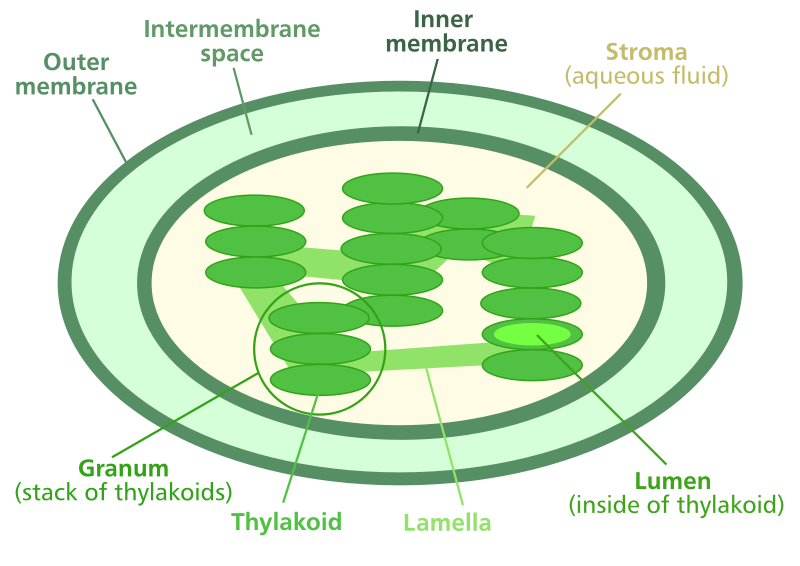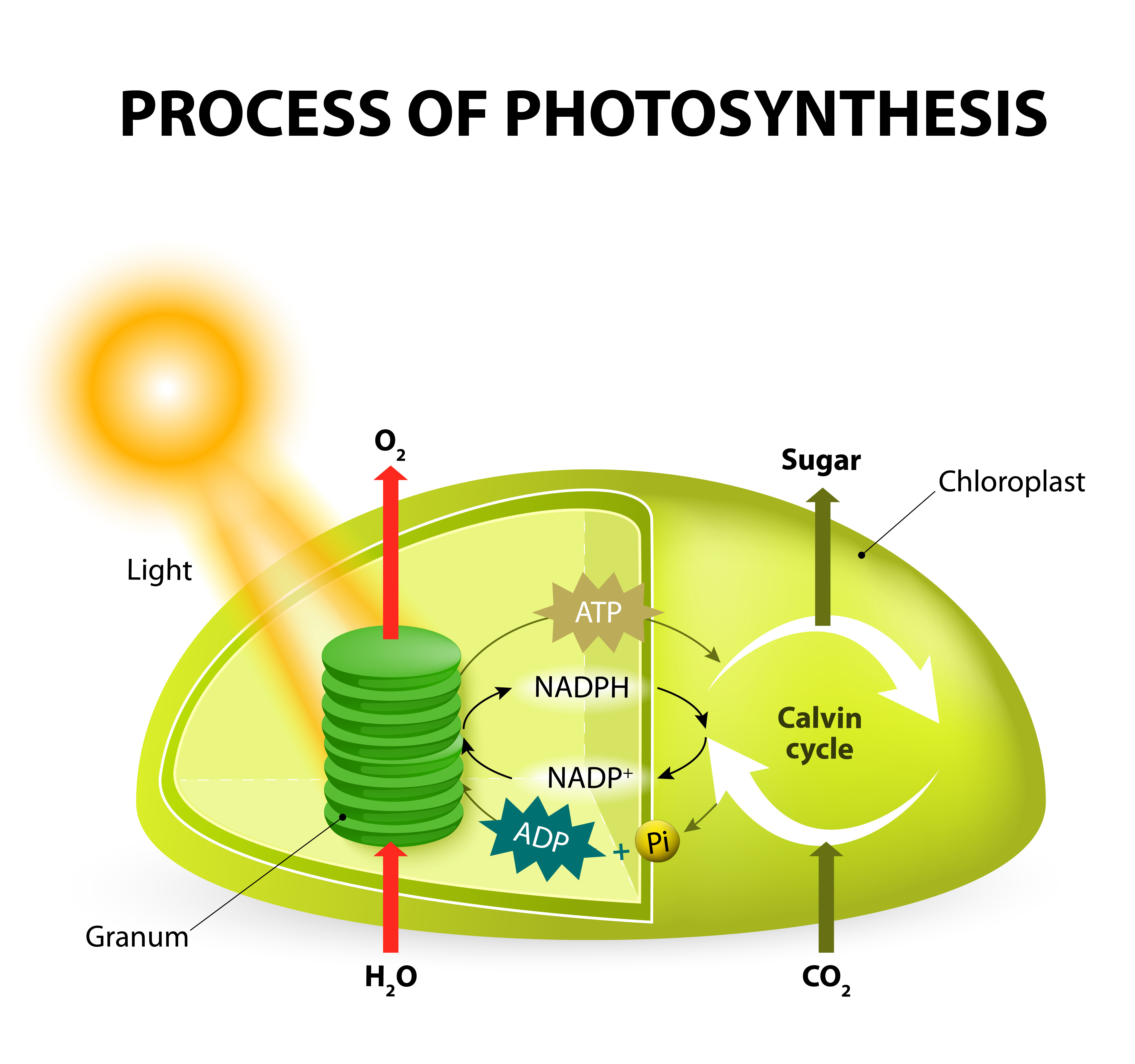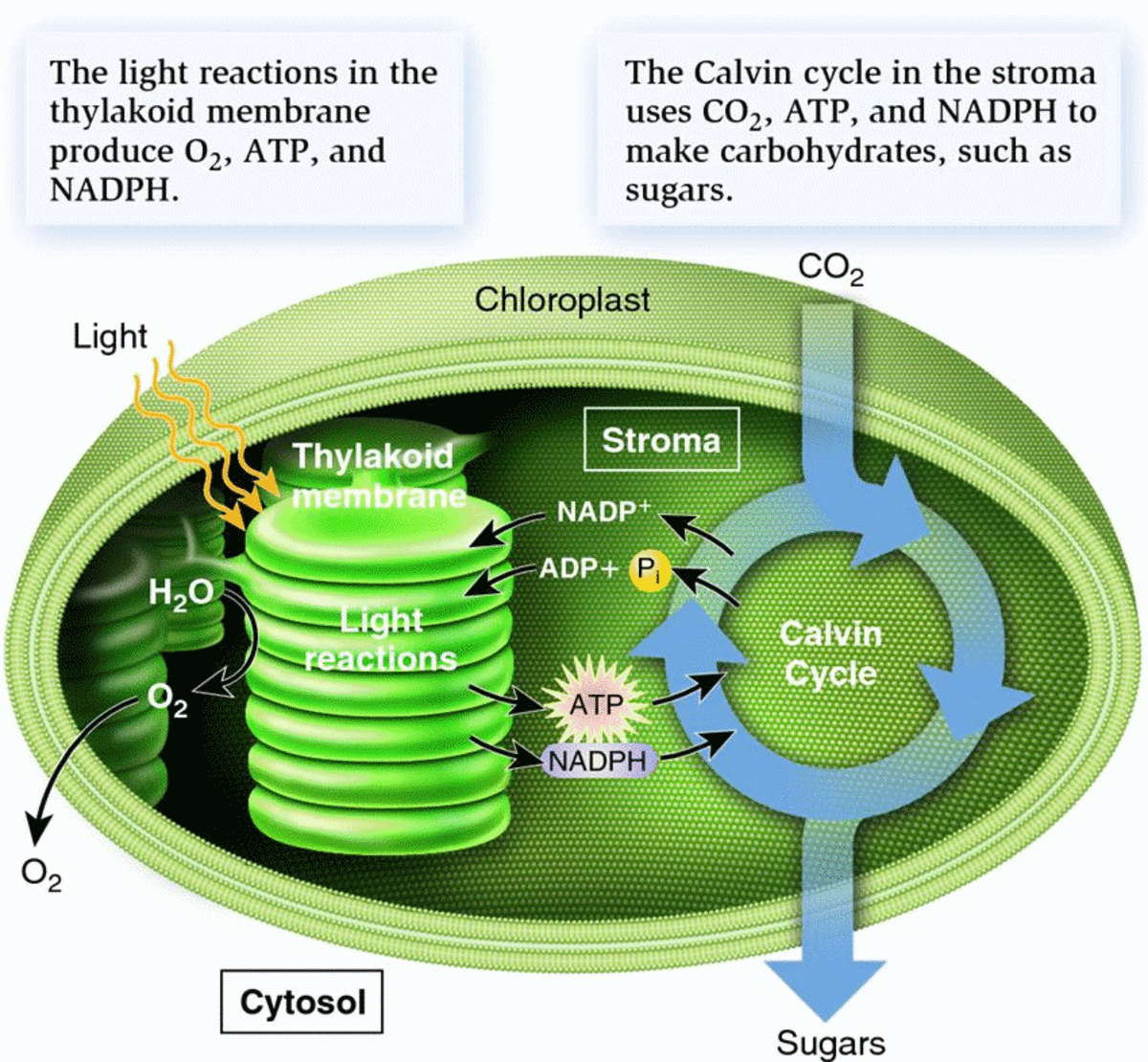What is stroma photosynthesis? It’s like the bustling kitchen of a plant cell, where the magic of energy production happens! Inside the chloroplast, a green organelle, lies the stroma, a fluid-filled space. It’s here that the Calvin Cycle, a series of intricate reactions, takes place, converting carbon dioxide into sugar, the plant’s fuel. Imagine the stroma as a busy workshop filled with specialized tools, like enzymes, that work together to transform sunlight into usable energy.
This process, known as photosynthesis, is essential for life on Earth. Plants, the green giants of our planet, use sunlight, water, and carbon dioxide to create their own food, releasing oxygen as a byproduct. It’s a beautiful cycle of life, where plants nourish themselves and us!
Introduction to Stroma

The stroma is a thick fluid that fills the space between the thylakoid membranes and the inner membrane of the chloroplast. It is a complex mixture of enzymes, sugars, and inorganic ions. It plays a vital role in photosynthesis, acting as the site for the Calvin cycle, which is the process that converts carbon dioxide into glucose.
Stroma Structure
The stroma is a semi-liquid substance that contains a variety of components. It is primarily composed of water and dissolved enzymes, but also contains:
- Ribosomes: These are responsible for protein synthesis, which is essential for the chloroplast’s functions.
- DNA: The stroma contains its own DNA, known as chloroplast DNA, which carries the genetic information for the chloroplast’s proteins.
- Grana: These are stacks of thylakoid membranes, which are the sites of light-dependent reactions in photosynthesis.
- Starch granules: These store the glucose produced during photosynthesis.
- Various enzymes: These catalyze the reactions of the Calvin cycle, which is the light-independent stage of photosynthesis.
Stroma and Photosynthesis
The stroma is the site of the Calvin cycle, which is the light-independent stage of photosynthesis. The Calvin cycle uses the energy produced by the light-dependent reactions to convert carbon dioxide into glucose. The stroma provides the necessary enzymes and other components for this process.
Stroma and Energy Production
The stroma plays a crucial role in energy production within the chloroplast. The Calvin cycle, which takes place in the stroma, is responsible for converting carbon dioxide into glucose, a sugar that provides energy for the plant. This process is fueled by the ATP and NADPH produced during the light-dependent reactions, which occur in the thylakoid membranes. The stroma provides the environment for the Calvin cycle to function effectively, ensuring that the plant has a continuous supply of energy.
Stroma Photosynthesis

The Calvin cycle, also known as the light-independent reactions, is the second stage of photosynthesis that takes place in the stroma of chloroplasts. It utilizes the energy stored in ATP and NADPH generated during the light-dependent reactions to convert carbon dioxide into glucose, a usable form of chemical energy for the plant.
The Calvin Cycle Steps
The Calvin cycle is a cyclical process that can be divided into three main stages: carbon fixation, reduction, and regeneration.
- Carbon Fixation: This is the initial step where carbon dioxide from the atmosphere is incorporated into an organic molecule. The enzyme RuBisCO (ribulose-1,5-bisphosphate carboxylase/oxygenase) catalyzes this reaction, combining CO 2 with a five-carbon sugar called ribulose-1,5-bisphosphate (RuBP) to form a six-carbon unstable intermediate. This intermediate quickly breaks down into two molecules of 3-phosphoglycerate (3-PGA), a three-carbon compound.
- Reduction: In this stage, 3-PGA is converted into glyceraldehyde-3-phosphate (G3P), a three-carbon sugar. This conversion requires energy from ATP and reducing power from NADPH generated during the light-dependent reactions. The energy from ATP is used to phosphorylate 3-PGA to 1,3-bisphosphoglycerate, and NADPH reduces 1,3-bisphosphoglycerate to G3P.
- Regeneration: The final stage involves the regeneration of RuBP, the starting molecule of the cycle. This requires a series of complex enzymatic reactions that consume ATP. G3P molecules are rearranged and combined to produce RuBP, which is then ready to accept more CO 2, restarting the cycle.
Role of Rubisco
Rubisco is the key enzyme in the Calvin cycle, responsible for the initial carbon fixation step. It is one of the most abundant enzymes on Earth and plays a critical role in converting inorganic carbon into organic compounds. Rubisco has a relatively low catalytic activity, meaning it can only fix carbon dioxide at a slow rate. This is one of the limiting factors for photosynthesis.
Energy Requirements of the Calvin Cycle
The Calvin cycle requires a significant amount of energy to drive its reactions. For every six molecules of CO 2 fixed, the cycle consumes 18 ATP molecules and 12 NADPH molecules. This energy is used to power the reduction and regeneration steps, ensuring the continuous production of glucose.
The Calvin cycle can be summarized as follows:
CO2 + 18 ATP + 12 NADPH + 12 H 2O → C 6H 12O 6 + 18 ADP + 18 P i + 12 NADP + + 6 H +
Stroma and its Components

The stroma is a gel-like matrix that fills the space inside the chloroplast, the site of photosynthesis. It is a dynamic and complex environment containing various components essential for the intricate processes of photosynthesis.
Stroma Components and Their Functions
The stroma is home to a diverse array of components, each playing a crucial role in photosynthesis. Here are some of the key components:
- Ribosomes: These are small, granular structures responsible for protein synthesis. They use the genetic information encoded in DNA to assemble amino acids into proteins, which are essential for various cellular functions, including photosynthesis.
- DNA: The stroma contains a small circular molecule of DNA, known as chloroplast DNA (cpDNA). This DNA carries the genetic information necessary for the chloroplast to function and replicate. It encodes for proteins involved in photosynthesis and other chloroplast-specific processes.
- Enzymes: The stroma is rich in enzymes, which are biological catalysts that speed up chemical reactions. These enzymes are crucial for the Calvin cycle, a series of reactions that use carbon dioxide to produce sugars, the primary product of photosynthesis. Some of the key enzymes in the stroma include:
- Rubisco: The most abundant enzyme on Earth, Rubisco catalyzes the initial step of the Calvin cycle, incorporating carbon dioxide into an organic molecule.
- Phosphoribulokinase: This enzyme plays a role in regenerating the carbon dioxide acceptor molecule, ribulose bisphosphate (RuBP), for the Calvin cycle.
- Glyceraldehyde 3-phosphate dehydrogenase: This enzyme is involved in the conversion of 3-phosphoglycerate to glyceraldehyde 3-phosphate, a key intermediate in the Calvin cycle.
- Starch Granules: These are storage structures for excess glucose produced during photosynthesis. Starch granules are essentially a form of plant carbohydrate that can be broken down to provide energy when needed.
Starch Granules and Photosynthesis
Starch granules play a crucial role in photosynthesis by acting as a temporary storage site for excess glucose produced during the Calvin cycle. When the rate of photosynthesis exceeds the plant’s immediate energy demands, the excess glucose is converted into starch and stored within the stroma. This storage mechanism ensures that the plant has a readily available source of energy for later use, such as during periods of low light or when the plant is actively growing.The formation and breakdown of starch granules are tightly regulated by the plant’s metabolic needs.
When the plant requires energy, the starch is broken down back into glucose, which can be used for growth, respiration, or other metabolic processes. This dynamic process of starch synthesis and breakdown allows the plant to efficiently manage its energy resources and adapt to changing environmental conditions.
Stroma and the Light-Dependent Reactions
The stroma is the site of the Calvin Cycle, the light-independent reactions of photosynthesis. This process uses the energy captured during the light-dependent reactions to convert carbon dioxide into glucose. The light-dependent reactions and the Calvin Cycle are intimately connected, working together to produce the energy and building blocks needed for plant growth.
Connection Between Light-Dependent Reactions and the Calvin Cycle
The light-dependent reactions and the Calvin Cycle are two interconnected processes that together form photosynthesis. The light-dependent reactions occur in the thylakoid membranes within the chloroplasts, while the Calvin Cycle takes place in the stroma.The light-dependent reactions capture light energy and convert it into chemical energy in the form of ATP and NADPH. This energy is then transferred to the stroma, where it is used by the Calvin Cycle to fix carbon dioxide into glucose.
- Energy Carriers: The light-dependent reactions produce ATP and NADPH, which act as energy carriers. ATP provides the energy needed for the Calvin Cycle to proceed, while NADPH is a reducing agent that provides electrons for the reduction of carbon dioxide.
- Electron Transfer: Electrons are transferred from the light-dependent reactions to the Calvin Cycle. This transfer of electrons is crucial for the reduction of carbon dioxide into glucose.
Utilization of ATP and NADPH in the Calvin Cycle, What is stroma photosynthesis
The Calvin Cycle utilizes the energy stored in ATP and NADPH generated during the light-dependent reactions. This process is a series of reactions that convert carbon dioxide into glucose, a sugar that serves as the primary energy source for plants.
- Carbon Fixation: The Calvin Cycle begins with the fixation of carbon dioxide into a five-carbon molecule called RuBP (ribulose bisphosphate). This process is catalyzed by the enzyme RuBisCO.
- Reduction: The fixed carbon dioxide is then reduced to a three-carbon molecule called G3P (glyceraldehyde-3-phosphate). This reduction requires energy from ATP and reducing power from NADPH.
- Regeneration: Some of the G3P molecules are used to regenerate RuBP, allowing the cycle to continue.
Role of the Thylakoid Membrane
The thylakoid membrane plays a crucial role in transferring energy from the light-dependent reactions to the stroma. This membrane is highly folded and contains chlorophyll, the pigment that captures light energy.
- Light Absorption: Chlorophyll absorbs light energy and uses it to excite electrons. These excited electrons are then passed along an electron transport chain, releasing energy that is used to pump protons across the thylakoid membrane.
- Proton Gradient: The pumping of protons creates a proton gradient across the thylakoid membrane. This gradient stores potential energy that is then used to produce ATP by ATP synthase.
- Energy Transfer: The ATP and NADPH produced in the thylakoid membrane are then transported to the stroma, where they are used by the Calvin Cycle to fix carbon dioxide.
Stroma and its Importance in Plant Growth: What Is Stroma Photosynthesis
The stroma, the gel-like matrix within chloroplasts, plays a crucial role in plant growth and development. It serves as the site for the Calvin cycle, a key process in photosynthesis that converts carbon dioxide into glucose, the primary source of energy for plants. The stroma also houses various enzymes and other essential molecules that participate in diverse metabolic processes, contributing to the overall growth and well-being of plants.
Production of Essential Organic Molecules
The stroma is a dynamic environment that facilitates the synthesis of essential organic molecules crucial for plant growth and development. These molecules include amino acids, lipids, and nucleic acids.
- Amino acids are the building blocks of proteins, which play a vital role in various cellular processes, including structural support, enzyme activity, and hormone production. The stroma provides the necessary environment and enzymes for amino acid synthesis, utilizing the products of the Calvin cycle as precursors.
- Lipids, including fatty acids and phospholipids, are essential components of cell membranes, energy storage, and hormone production. The stroma contains enzymes and pathways involved in lipid biosynthesis, using glucose and other intermediates from the Calvin cycle as starting materials.
- Nucleic acids, such as DNA and RNA, are responsible for storing and transmitting genetic information. While the stroma does not directly synthesize nucleic acids, it provides the necessary energy and precursors from the Calvin cycle for their production in other cellular compartments.
So, next time you see a lush green plant, remember the incredible work happening within its stroma. This tiny, bustling space is the heart of plant energy production, a testament to the beauty and complexity of nature. From the Calvin Cycle to the production of essential organic molecules, the stroma plays a vital role in the life of plants and, ultimately, our own.
FAQ Corner
What is the difference between the stroma and the thylakoid?
The stroma is the fluid-filled space surrounding the thylakoid membrane within the chloroplast. The thylakoid is a system of interconnected membranes within the stroma, where the light-dependent reactions of photosynthesis take place.
What are the products of the Calvin Cycle?
The Calvin Cycle produces glucose, a simple sugar that serves as the primary energy source for plants. It also produces other essential organic molecules like amino acids and lipids.
How does the stroma contribute to plant growth?
The stroma provides the environment for the Calvin Cycle, which produces glucose, the building block for plant growth. It also produces essential organic molecules, like amino acids and lipids, necessary for cell structure and function.






